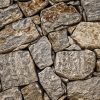Researchers Find Potential Source of Rare Earth Elements
Since China produces over 90 percent of rare earth elements—but sets limitations and regulations on exporting—researchers are trying to get creative with how to recycle and repurpose rare earth magnets.
According to a new study published in the Journal of Chemical Thermodynamics, researchers at Rutgers University-New Brunswick and members of the Critical Materials Institute have found a potential new source of rare earth elements (REE)—phosphorite waste. This discovery could help decrease the cost of REEs and make them more accessible to those outside of China.
Phosphogypsum Waste and Rare Earth Elements
Researchers discovered that REEs can be salvaged from phosphogypsum, which is waste from phosphoric acid production. In order to produce phosphoric acid, used in fertilizers, dental products, skin products, and even food and beverages, phosphorite must be mined—roughly 250 million tons of the rock is mined annually. While rare earth metals only make up less than 0.1 percent of mined phosphorite, 100,000 tons of them end up in phosphogypsum waste around the world.
A Greener Alternative to Rare Earth Element Extraction
Another part of the study looked at ways to extract the REEs from the phosphogypsum waste without using harmful chemicals frequented by conventional methods of extraction. The researchers attempted in extracting six rare earth elements--cerium, europium, neodymium, samarium, ytterbium, and yttrium--from synthetic phosphogypsum.
They tested a specific bio-acid mixture made from gluconic acid which was created by scientists at Idaho National Laboratory. They found that the bio-acid was more successful at extraction than pure gluconic acid. Their next steps include testing the acid mixture on waste generated during phosphoric acid production to compare it to their findings when tested on synthetic waste.
While this process for extracting REEs from phosphogypsum waste isn’t ready to be put into practice quite yet, it’s a step toward the right direction. This discovery could lead to an increase in the availability of elements—such as neodymium, which is what many of our products are made out of—in places other than China, cutting down the cost and limitations due to export laws. It could also lead to healthier, greener ways of extracting elements for future uses.
Learn More About Magnetism in Science
For more information on break-through magnetic discoveries, browse through our magnet in the news section, sign up for our monthly newsletter, or contact us today with your questions.

